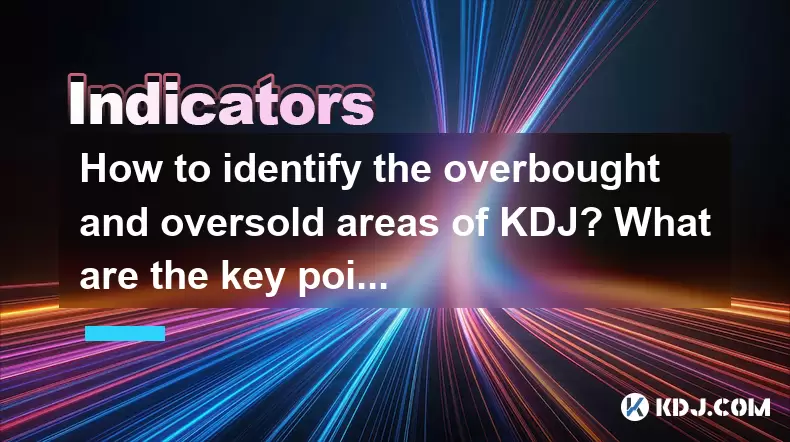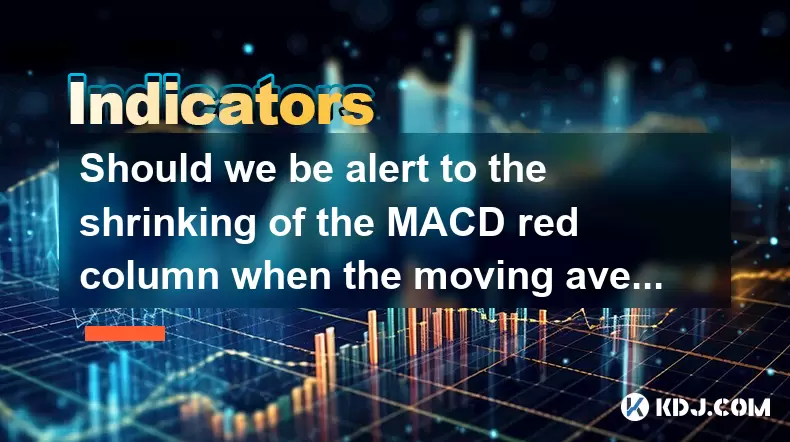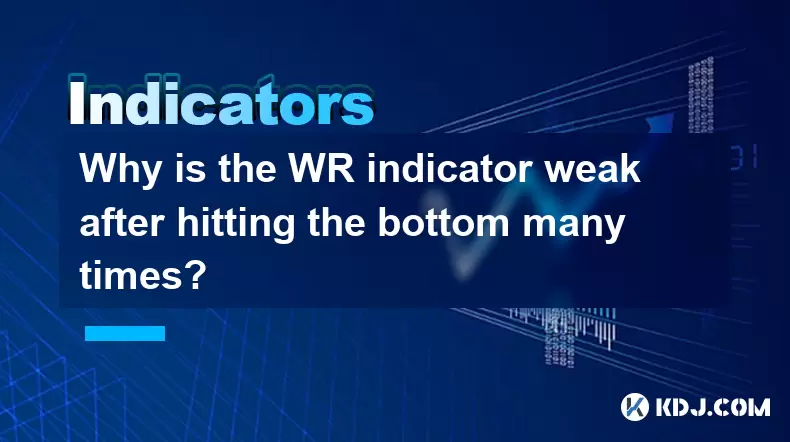-
 Bitcoin
Bitcoin $101,898.5005
-0.75% -
 Ethereum
Ethereum $2,258.1125
-1.07% -
 Tether USDt
Tether USDt $1.0004
0.01% -
 XRP
XRP $2.0178
-2.93% -
 BNB
BNB $624.0243
-1.53% -
 Solana
Solana $134.3298
-0.90% -
 USDC
USDC $0.9999
0.01% -
 TRON
TRON $0.2675
-2.05% -
 Dogecoin
Dogecoin $0.1538
-1.96% -
 Cardano
Cardano $0.5482
-1.11% -
 Hyperliquid
Hyperliquid $35.5636
5.45% -
 Bitcoin Cash
Bitcoin Cash $453.4902
-1.66% -
 Sui
Sui $2.5134
-2.97% -
 UNUS SED LEO
UNUS SED LEO $9.1292
1.77% -
 Chainlink
Chainlink $11.8457
-1.60% -
 Stellar
Stellar $0.2312
-2.73% -
 Avalanche
Avalanche $16.9721
0.29% -
 Toncoin
Toncoin $2.7549
-3.82% -
 Shiba Inu
Shiba Inu $0.0...01081
-1.10% -
 Litecoin
Litecoin $80.8250
-0.71% -
 Hedera
Hedera $0.1374
0.21% -
 Monero
Monero $305.4827
-2.36% -
 Ethena USDe
Ethena USDe $1.0006
0.00% -
 Dai
Dai $1.0000
-0.01% -
 Polkadot
Polkadot $3.2085
-3.12% -
 Bitget Token
Bitget Token $4.0845
-3.13% -
 Uniswap
Uniswap $6.3353
-1.63% -
 Pi
Pi $0.5085
-0.70% -
 Pepe
Pepe $0.0...08913
-3.82% -
 Aave
Aave $232.7090
-0.58%
How to identify the overbought and oversold areas of KDJ? What are the key points in combining volume analysis?
The KDJ indicator, derived from the stochastic oscillator, helps identify overbought and oversold conditions in crypto markets, with volume analysis enhancing its signals.
May 23, 2025 at 08:29 am

Understanding the KDJ Indicator
The KDJ indicator is a technical analysis tool used to identify overbought and oversold conditions in the cryptocurrency market. It is derived from the stochastic oscillator and is particularly popular among traders for its ability to signal potential reversals. The KDJ consists of three lines: K line, D line, and J line. The K and D lines are similar to the %K and %D lines in the stochastic oscillator, while the J line is a more sensitive indicator that can provide early signals of market movements.
The K line represents the fastest line and is calculated based on the highest and lowest prices over a certain period. The D line is a moving average of the K line, providing a smoother representation of the K line's movements. The J line is calculated as 3K - 2D, making it the most sensitive to price changes and often used to predict short-term price movements.
Identifying Overbought and Oversold Areas with KDJ
To identify overbought and oversold areas using the KDJ indicator, traders focus on the levels of the K, D, and J lines. Generally, the KDJ values range from 0 to 100.
- Overbought Condition: When the KDJ lines, particularly the J line, move above 80, it suggests that the market might be overbought. This means the price may have risen too quickly and could be due for a correction.
- Oversold Condition: Conversely, when the KDJ lines drop below 20, it indicates an oversold condition. This suggests that the price may have fallen too rapidly and could be poised for a rebound.
Traders often look for specific patterns within the KDJ indicator to confirm these conditions:
- Bullish Divergence: If the price makes a new low but the KDJ forms a higher low, it may signal a potential upward reversal.
- Bearish Divergence: Conversely, if the price reaches a new high but the KDJ forms a lower high, it may indicate a potential downward reversal.
Combining KDJ with Volume Analysis
Volume analysis is a critical aspect of technical analysis that can enhance the signals provided by the KDJ indicator. Volume represents the number of units traded within a specific period and can confirm or refute the signals provided by the KDJ.
- Volume Confirmation: When the KDJ indicates an overbought or oversold condition, traders should look for a corresponding increase in volume. For instance, if the KDJ suggests an overbought condition and there is a significant increase in volume, it strengthens the likelihood of an impending price correction.
- Volume Divergence: If the KDJ indicates an overbought condition but volume is declining, it may suggest that the upward momentum is weakening, and a price correction might be imminent.
Practical Application of KDJ and Volume Analysis
To effectively combine KDJ and volume analysis, traders should follow a systematic approach:
- Monitor the KDJ Lines: Keep an eye on the K, D, and J lines to identify when they move above 80 or below 20, signaling potential overbought or oversold conditions.
- Check Volume Levels: When the KDJ signals an overbought or oversold condition, check the corresponding volume levels. An increase in volume can confirm the KDJ signal, while a decrease may suggest a false signal.
- Look for Divergence: Monitor for divergences between price movements and the KDJ lines. Confirm these divergences with volume trends to increase the reliability of the signals.
Using KDJ and Volume for Trading Decisions
When using KDJ and volume analysis to make trading decisions, it's important to consider the following steps:
- Identify the Signal: Use the KDJ to identify overbought and oversold conditions. Look for the J line crossing above 80 or below 20.
- Confirm with Volume: Check the volume levels to confirm the KDJ signal. An increase in volume during an overbought or oversold condition strengthens the signal.
- Analyze Divergence: Look for divergences between price movements and the KDJ lines. Confirm these divergences with volume trends to validate potential reversals.
- Execute Trades: Based on the confirmed signals, decide whether to enter or exit a trade. For instance, if the KDJ indicates an overbought condition with high volume, consider selling or shorting the cryptocurrency.
Practical Example of KDJ and Volume Analysis
Consider a scenario where Bitcoin's price is rising, and the KDJ lines are moving above 80, indicating an overbought condition. To confirm this signal, you check the volume and find that it has significantly increased. This suggests that the upward momentum is strong, but the high volume could also indicate that the market is reaching a peak and a correction might be imminent.
- Monitor the KDJ Lines: You see the J line crossing above 80, signaling an overbought condition.
- Check Volume Levels: The volume has increased, confirming the KDJ signal.
- Look for Divergence: You notice a bearish divergence where the price makes a new high, but the KDJ forms a lower high.
- Execute Trades: Based on the confirmed signals, you decide to sell or short Bitcoin, anticipating a price correction.
Frequently Asked Questions
Q: Can the KDJ indicator be used alone for trading decisions?
A: While the KDJ indicator is a powerful tool for identifying overbought and oversold conditions, it is best used in conjunction with other technical analysis tools, such as volume analysis, to increase the reliability of trading signals. Using the KDJ alone may lead to false signals, especially in volatile cryptocurrency markets.
Q: How often should I check the KDJ and volume indicators?
A: The frequency of checking the KDJ and volume indicators depends on your trading style. For day traders, checking these indicators multiple times throughout the day is common. Swing traders and long-term investors might check them less frequently, such as daily or weekly, to align with their trading timeframes.
Q: What are the limitations of using the KDJ indicator in cryptocurrency trading?
A: The KDJ indicator, like any technical analysis tool, has limitations. It can generate false signals in highly volatile markets, and it may lag behind significant price movements. Additionally, the KDJ indicator is less effective in trending markets, where overbought and oversold conditions may persist for extended periods without a reversal.
Q: How can I adjust the KDJ settings for different cryptocurrencies?
A: The default settings for the KDJ indicator are typically 9, 3, and 3 for the periods of the K, D, and J lines, respectively. However, these settings can be adjusted based on the volatility and trading patterns of different cryptocurrencies. For highly volatile assets, you might consider using shorter periods to capture more frequent signals, while less volatile assets might require longer periods for more reliable signals.
Disclaimer:info@kdj.com
The information provided is not trading advice. kdj.com does not assume any responsibility for any investments made based on the information provided in this article. Cryptocurrencies are highly volatile and it is highly recommended that you invest with caution after thorough research!
If you believe that the content used on this website infringes your copyright, please contact us immediately (info@kdj.com) and we will delete it promptly.
- DOGE Recovery Amid US-Iran Tensions: A Market Rollercoaster
- 2025-06-23 20:45:13
- Fiserv, PayPal, and Stablecoins: A New Era of Interoperability?
- 2025-06-23 20:45:13
- Hacken Token's Wild Ride: Minting Exploit and the Cryptocurrency Crash
- 2025-06-23 21:05:12
- Dogecoin, Cloud Mining, and Blockchain: A Meme's Evolution
- 2025-06-23 21:25:12
- Layer 1 Turmoil: CEO Ousted Amidst Scam Allegations
- 2025-06-23 21:05:12
- Solana's Stumble: Price Crash and Network Exodus?
- 2025-06-23 21:25:12
Related knowledge

What is the significance of the gap formed by the gap opening not being filled within five days?
Jun 23,2025 at 09:42pm
Understanding Gaps in Cryptocurrency TradingIn the world of cryptocurrency trading, a gap refers to a situation where the price of an asset jumps from one level to another without any trading activity occurring between those two levels. This often happens over weekends or holidays when the market is closed, and significant news or events occur that impa...

Does the second golden cross of MACD above the zero axis represent the continuation of strength?
Jun 23,2025 at 08:21pm
Understanding the MACD IndicatorThe Moving Average Convergence Divergence (MACD) is a widely used technical analysis tool in cryptocurrency trading. It consists of three main components: the MACD line, the signal line, and the histogram. The MACD line is calculated by subtracting the 26-period Exponential Moving Average (EMA) from the 12-period EMA. The...

Is it effective when the DIF line suddenly crosses the zero axis when the volume is shrinking and the market is trading sideways?
Jun 23,2025 at 07:29pm
Understanding the DIF Line in Technical AnalysisThe DIF line, or the Difference Line, is a critical component of the MACD (Moving Average Convergence Divergence) indicator, widely used in technical analysis across cryptocurrency and traditional financial markets. It represents the difference between the 12-period EMA (Exponential Moving Average) and the...

Should we be alert to the shrinking of the MACD red column when the moving average is arranged in a bullish pattern?
Jun 23,2025 at 08:14pm
Understanding the MACD Red Column and Its SignificanceThe Moving Average Convergence Divergence (MACD) is a widely used technical indicator in cryptocurrency trading. It consists of three main components: the MACD line, the signal line, and the MACD histogram (the red column). The red column represents the difference between the MACD line and the signal...

Why is the WR indicator weak after hitting the bottom many times?
Jun 23,2025 at 07:56pm
Understanding the WR Indicator in Cryptocurrency TradingThe Williams %R (WR) indicator is a momentum oscillator used by traders to identify overbought and oversold levels in the market. It ranges from 0 to -100, with readings above -20 considered overbought and below -80 considered oversold. In the context of cryptocurrency trading, where volatility is ...

Is the shrinking cross star after the historical high a signal of topping?
Jun 23,2025 at 05:56pm
Understanding the Shrinking Cross Star PatternIn technical analysis, candlestick patterns are essential tools for traders to predict potential price movements. One such pattern is the shrinking cross star, which appears as a small-bodied candle with long upper and lower shadows, indicating indecision in the market. When this pattern forms after an asset...

What is the significance of the gap formed by the gap opening not being filled within five days?
Jun 23,2025 at 09:42pm
Understanding Gaps in Cryptocurrency TradingIn the world of cryptocurrency trading, a gap refers to a situation where the price of an asset jumps from one level to another without any trading activity occurring between those two levels. This often happens over weekends or holidays when the market is closed, and significant news or events occur that impa...

Does the second golden cross of MACD above the zero axis represent the continuation of strength?
Jun 23,2025 at 08:21pm
Understanding the MACD IndicatorThe Moving Average Convergence Divergence (MACD) is a widely used technical analysis tool in cryptocurrency trading. It consists of three main components: the MACD line, the signal line, and the histogram. The MACD line is calculated by subtracting the 26-period Exponential Moving Average (EMA) from the 12-period EMA. The...

Is it effective when the DIF line suddenly crosses the zero axis when the volume is shrinking and the market is trading sideways?
Jun 23,2025 at 07:29pm
Understanding the DIF Line in Technical AnalysisThe DIF line, or the Difference Line, is a critical component of the MACD (Moving Average Convergence Divergence) indicator, widely used in technical analysis across cryptocurrency and traditional financial markets. It represents the difference between the 12-period EMA (Exponential Moving Average) and the...

Should we be alert to the shrinking of the MACD red column when the moving average is arranged in a bullish pattern?
Jun 23,2025 at 08:14pm
Understanding the MACD Red Column and Its SignificanceThe Moving Average Convergence Divergence (MACD) is a widely used technical indicator in cryptocurrency trading. It consists of three main components: the MACD line, the signal line, and the MACD histogram (the red column). The red column represents the difference between the MACD line and the signal...

Why is the WR indicator weak after hitting the bottom many times?
Jun 23,2025 at 07:56pm
Understanding the WR Indicator in Cryptocurrency TradingThe Williams %R (WR) indicator is a momentum oscillator used by traders to identify overbought and oversold levels in the market. It ranges from 0 to -100, with readings above -20 considered overbought and below -80 considered oversold. In the context of cryptocurrency trading, where volatility is ...

Is the shrinking cross star after the historical high a signal of topping?
Jun 23,2025 at 05:56pm
Understanding the Shrinking Cross Star PatternIn technical analysis, candlestick patterns are essential tools for traders to predict potential price movements. One such pattern is the shrinking cross star, which appears as a small-bodied candle with long upper and lower shadows, indicating indecision in the market. When this pattern forms after an asset...
See all articles
























































































